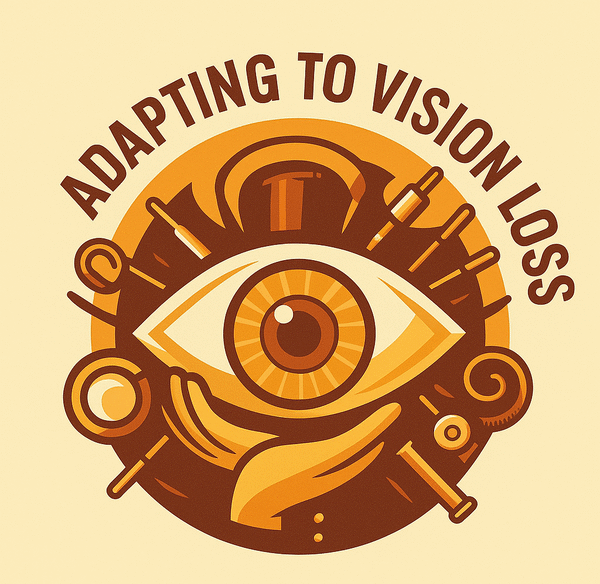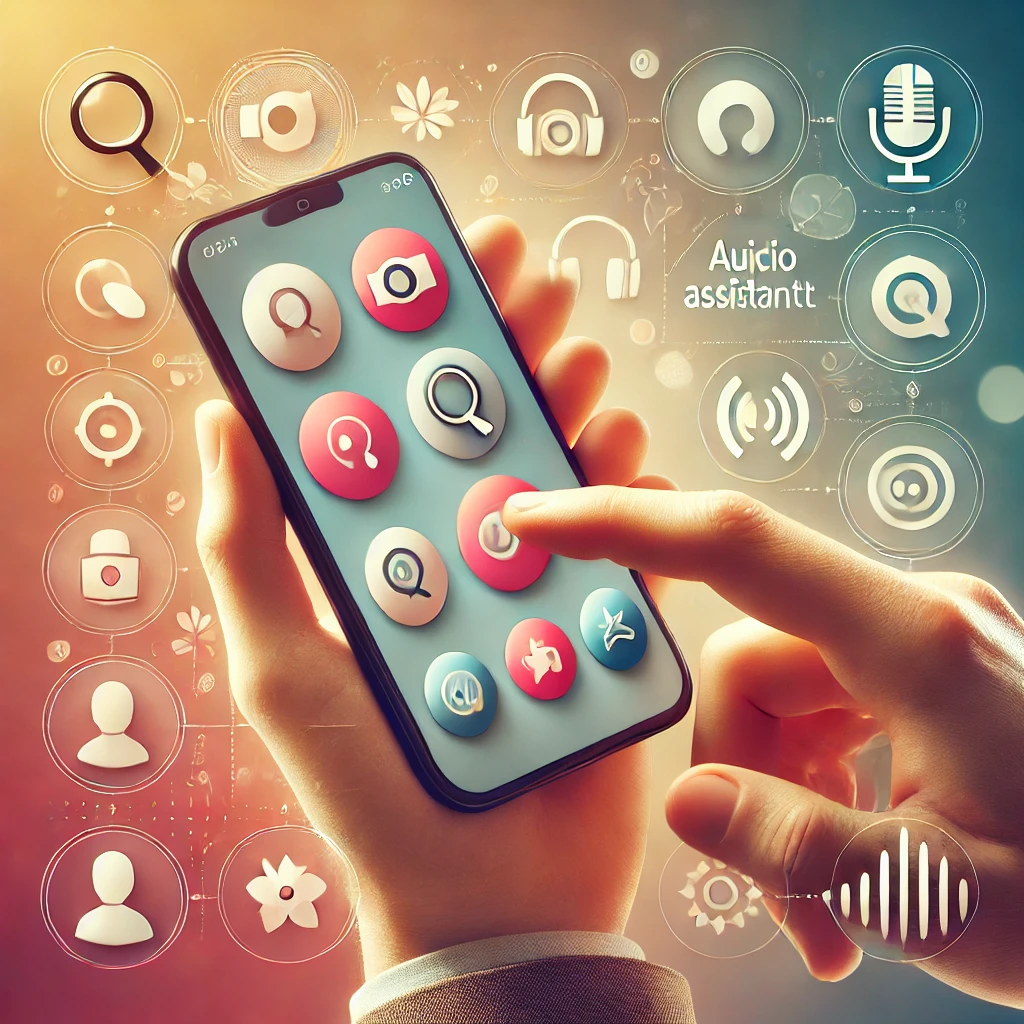Innovations For Daily Living
As technology continues to advance, so do the tools and devices that assist people with visual impairments. In recent years, there has been an explosion of new products designed specifically to address the unique needs of visually impaired individuals, empowering them to live more independently, communicate effectively, and navigate the world with confidence. Here’s a look at some of the most unique and impactful visual impairment aids that are making waves in 2024.
1. Smart Glasses with AI-Based Visual Assistance
Smart glasses have seen a significant transformation in recent years, evolving from simple audio-assistance devices to sophisticated tools with built-in artificial intelligence (AI). In 2024, smart glasses like the Envision Glasses and Orcam MyEye are at the forefront of this movement. These glasses provide real-time audio descriptions of the wearer’s surroundings, read text, recognize faces, and identify products, all hands-free.
For example, Envision Glasses use advanced AI to help users “see” by translating visual data into spoken information. With a simple voice command, users can read documents, identify objects, and even get help with currency recognition. These devices are game-changers for those with visual impairments, allowing for more independence and confidence in both everyday tasks and new environments.
2. Braille E-Readers with Refreshable Displays
Braille e-readers are transforming the way visually impaired people access digital content. Devices like the Dot Pad and BrailleDuo are now providing more affordable and portable options for reading Braille, which is invaluable for students, professionals, and anyone who prefers reading in Braille format.
he Dot Pad, for example, has a refreshable Braille display that allows users to read books, documents, and other digital content without needing large Braille paper volumes. It connects to smartphones, tablets, and computers, so users can download books and materials from accessible digital libraries directly onto the device. Its portability and ease of use make it ideal for both personal and professional applications.
3. AI-Powered Mobility Aids
Traditional white canes and guide dogs have been invaluable tools for navigation, but recent advancements in AI-powered mobility aids are offering new layers of support. Devices like the WeWALK Smart Cane and the GITA robot assistant are making a big impact by combining mobility assistance with cutting-edge technology.
The WeWALK Smart Cane, for instance, integrates Google Maps and Bluetooth connectivity, offering route guidance and obstacle detection. It can alert users to obstacles at head height—something traditional canes often miss—and provide directions through vibrations and voice prompts. This cane is especially useful in urban areas, where navigation and obstacle avoidance can be complex.
The GITA robot assistant is a more futuristic option: it’s a robot that can carry personal items and follow the user autonomously, helping with transportation needs like carrying groceries or shopping bags. While the GITA may not be as widely accessible yet, it’s a glimpse into the future of mobility aids for the visually impaired.
4. Voice-Controlled Smart Home Devices for Independence
Smart home technology has rapidly gained popularity, but it’s proving to be an invaluable tool for visually impaired individuals who benefit from hands-free control. With devices like Amazon Echo, Google Nest, and Apple HomePod, people with visual impairments can manage daily tasks more easily.
Using voice commands, users can control lights, adjust thermostats, lock doors, and play audio instructions for cooking or cleaning—all without needing to interact with a screen or buttons. In 2024, smart home devices are becoming even more intuitive, with enhanced voice recognition and compatibility with a wide range of appliances, making them a critical part of independent living.
5. Enhanced Screen Readers with Multi-Sensory Feedback
Screen readers have been around for some time, but 2024 brings even more sophisticated options with multi-sensory feedback features. Screen readers like JAWS (Job Access With Speech) and VoiceOver now include tactile and audio cues that provide more contextual information about what’s on the screen. Newer versions can detect layout changes and distinguish between different types of content, such as images, tables, and forms, making navigation smoother and more efficient.
The enhanced features of these screen readers also extend to mobile applications, where they support touchscreen gestures for ease of use. With better compatibility across websites, apps, and devices, visually impaired individuals can access information and communicate more effectively than ever before.
6. Smart Medication Management Systems
Managing medication can be a major challenge for people with low vision. Traditional pill bottles and labels are often difficult to read, leading to confusion and, potentially, missed doses. Fortunately, new smart medication management systems, like MedMinder and PillDrill, have made it easier to keep track of medication schedules.
These devices provide audio alerts when it’s time to take medication and track when doses are taken, making it simple for visually impaired users to stay on schedule. Some systems, like PillDrill, have customizable reminders that can be paired with wearable devices, which are ideal for on-the-go reminders.
7. Color and Object Recognition Tools
Determining the color of clothing or identifying items independently is now easier thanks to wearable and handheld color recognition tools. For example, devices like the Colorino and TapTapSee app have become increasingly accurate and are popular with those who want to perform tasks like matching clothes or identifying specific items in their surroundings.
Colorino is a handheld device that identifies colors and light sources, which is especially helpful for clothing selection and managing different colored objects in the home. The TapTapSee app, available on smartphones, lets users take a photo of an object, and it verbally describes what it “sees,” which can be a lifesaver for identifying everyday items.
8. Wayfinding and Navigation Apps Designed for Accessibility
GPS and navigation apps designed specifically for visually impaired individuals have transformed travel and orientation. Apps like Soundscape by Microsoft, BlindSquare, and Lazarillo use audio-based navigation to help users identify points of interest, directions, and even describe the surrounding environment.
Microsoft Soundscape, for instance, uses 3D audio cues to guide users along routes and provide spatial awareness. The app is designed to be used in the background, allowing users to listen to the surrounding environment while being alerted to important landmarks and upcoming turns. These apps are invaluable for visually impaired individuals who need to travel independently, providing confidence in both familiar and unfamiliar locations.
9. Wearable Health Monitoring Devices
Wearable health devices are not only monitoring fitness but are also being adapted to assist visually impaired individuals. Devices like the Apple Watch, with its accessible design and health monitoring capabilities, can now detect irregular heartbeats, fall incidents, and even provide emergency assistance.
The Apple Watch and other wearable health devices have VoiceOver compatibility, which reads out key health information like heart rate and activity levels. This allows visually impaired users to stay informed about their health and even receive alerts in real time if any irregularities are detected.
10. Virtual Reality (VR) Training for Mobility Skills
While virtual reality (VR) may seem unexpected in a guide on visual impairment aids, VR is proving to be useful for mobility training. VR platforms like IrisVision VR are helping individuals with low vision practice real-world skills, like crossing streets, avoiding obstacles, and building spatial awareness, all in a safe virtual environment.
IrisVision VR uses augmented reality to help users with low vision by enhancing the visual clarity of their surroundings. In addition to VR for mobility training, it allows users to view the world through a combination of virtual and augmented reality lenses, offering enhanced visual perception. This tool offers a unique approach to mobility training and independence.
The world of visual impairment aids in 2024 is filled with incredible innovations that improve daily living, mobility, and independence. From smart glasses with AI-powered assistance to screen readers with multi-sensory feedback and even VR-based mobility training, today’s technologies are pushing the boundaries of what’s possible for people with visual impairments. As these tools continue to evolve, visually impaired individuals can look forward to an ever-expanding toolkit of aids that empower them to live more independently, confidently, and connected to the world around them.
4o

